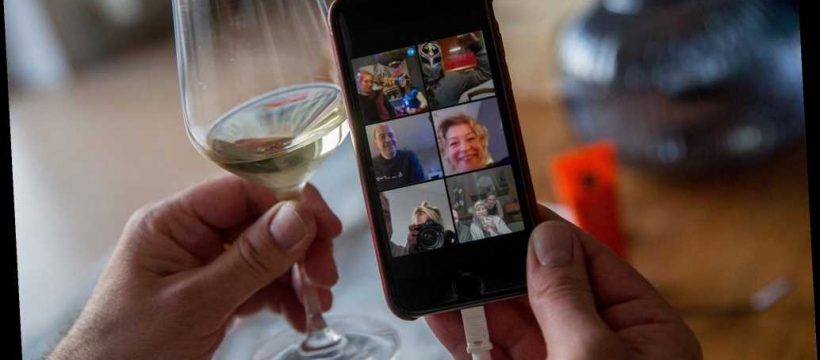At this crazy moment in our lives, amid a devastating once-in-a-generation viral pandemic, let’s pause to shout: Hooray for our screens! Cheers for our smart devices! Hooray for Facebook, WhatsApp and Amazon and Fresh Direct!
Most mornings at 6:30, my 71-year-old mother let herself into our home. My kids ran into her arms to greet her, then she got them ready for school.
My youngest son only ate oatmeal when it was made by her, even though it’s the instant kind and should taste the same no matter who makes it. She fixed my daughter’s hair before school. She left treats in all of their lunch boxes.
That was before the coronavirus arrived on America’s shores and began spreading like a — well, a contagion. It’s been 10 days since we last heard my mom’s key clicking in the lock.
The coronavirus transition has been difficult, more so for her, of course. We explain that we are keeping her away to keep her safe, since the virus targets the elderly; it’s hard to understand.
A few years ago, we convinced my mom to trade in her flip phone for a smartphone. As we’re all huddled in our home, we speak “face to face” several times a day — because technology allows it. We watch her snuggle with her cat and her eyes light up when my kids describe what their days have been like.
There was a joke that went, ahem, viral, a few years ago, about what one would say to a time traveler from the past, to give him a sense of what our lives are like today. “I have a device in my pocket capable of accessing the entirety of human knowledge,” we might tell such a person. “I use it to argue with strangers and look at pictures of cats.”
But suddenly that device is the center of our world, and no one is hand-wringing over it. In our home, we’re using it less to argue with strangers but more for cat photos — and that’s OK.
My kids start their day with messages from their teachers. They Google-hangout with their friends. They watch live streams of animals in zoos. Famed children’s author Mo Willems teaches a drawing class, and they all make perfect cartoon pigeons. We listen to science podcasts and history podcasts.
There are online dance parties and yoga classes. I bought a season of “Little House on the Prairie” on Amazon to show them that our lives, even in the time of corona, are cushy and comfortable.
The screens even help minimize time spent on the screens. We fire up Amazon, and our order of playing cards, board games and art supplies takes just a few clicks. The screens help keep us safe. Thanks to Fresh Direct, I haven’t been inside a grocery store yet.
For my husband and me, screens mean we are able to do our work and continue our careers while not leaving the house. We use Zoom to talk to our coworkers face-to-face. We e-mail, we text.
In normal times, we might see our friends for dinner every few weeks. Now we’re more in touch than ever. At night, after the kids are asleep, our group holds cocktail hour over FaceTime. We laugh through our phones and share our fears. We talk about our isolated days. We connect in a very real way.
Social media, always meant to tie us together, finally is doing its job. Facebook normally borders on unbearable, but in a pandemic it is alive with social interaction. Twitter should still mostly be avoided, but it has been good for sharing ways to help.
Nothing is perfect, and there are still plenty of downsides to a life lived on the Internet. People still use the Web to spread misinformation or to foment hysteria. China is clearly using it to sow insane ideas about America spreading the virus. Don’t let them.
But for the most part, the Internet is at its zenith. It’s useful, it’s personal. Screens are keeping us together at a time when we are forced apart. We’re sharing data, we’re sharing stories. We’re finding ways to help each other. When this is over, and we’re back to our normal lives, let’s not take for granted how we held each other close through our devices.
And let’s not go back to mindless scrolling. We’re meant for so much more.
Twitter: @Karol
Source: Read Full Article
